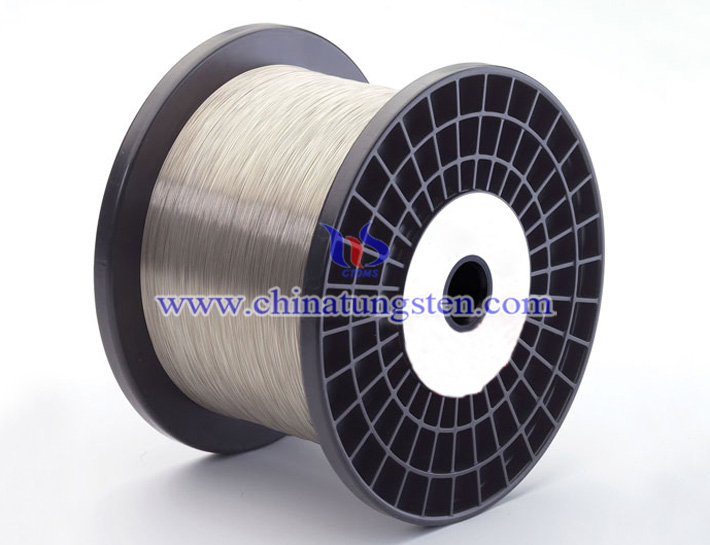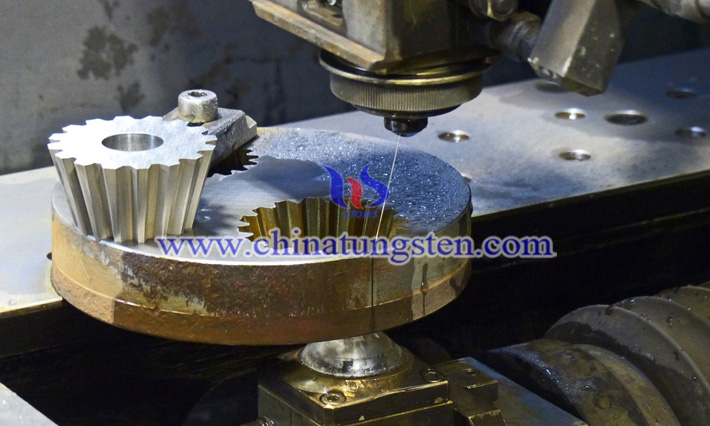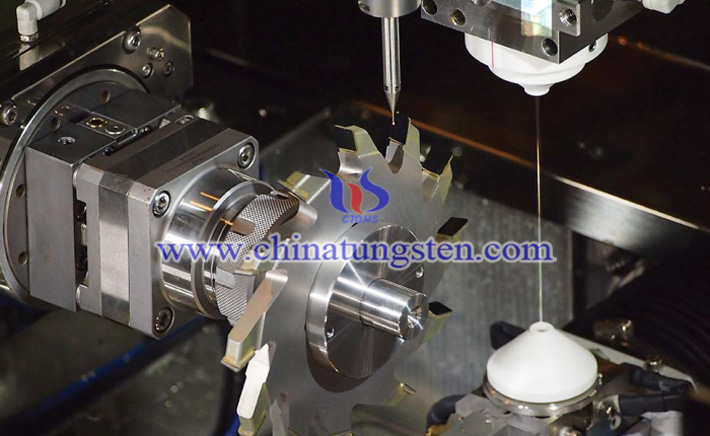Molybdenum Bismuth Alloy Wire is A Mainstream Wire for Wire Cutting
- Details
- Category: Tungsten Information
- Published on Tuesday, 13 November 2018 09:05
Is the bismuth molybdenum bismuth alloy wire the main wire cutting electrode wire? A group of research materials will tell you later. We start with the “six hopes” of the wire cutting industry. There are so many expectations in the wire-cutting boss: one is looking forward to the wind; the second is not changing the liquid; the three expecting the meter does not turn; the fourth is expecting the rent to be halved; the five hope that the sun does not fall; the six-hundred machine turns over 10,000! However, the wire-cutting master and the little master said after hearing that they did not say the "five expectations" in the back. We first realized the "first hope", that is, when the "electrode wire is not easily broken", other.
When talking about the wire-cut electrode wire, I think that both the master and the master know that the wire-cut electrode wire mainly has molybdenum wire and copper wire. Choosing molybdenum wire, or choosing copper wire, it depends on the open car, slow speed, slow speed, or high-speed fast walking, or ultra-high speed? Open wire (low speed wire), using copper wire; open wire (high speed wire) and medium wire, use molybdenum wire. We don't talk about copper wire today, mainly about molybdenum wire.

Today, molybdenum wire has been widely used in modern mold processing. Therefore, it is occupying an increasingly important position in the molybdenum metal deep processing industry. Among them, at present, molybdenum wire used for wire EDM in the market mainly includes pure molybdenum wire and molybdenum bismuth alloy wire. This is a bit of a hassle. When there is more than 1 (only integers), it often means choice. So, how to choose molybdenum wire for wire-cut electrode wire? This requires understanding the requirements of wire cutting for molybdenum wire.
The requirements for wire cutting processing on molybdenum wire are mainly reflected in the yarn breaking rate, discharge efficiency and material loss. By improving the discharge efficiency and reducing the material loss, the wire breakage rate of the molybdenum wire can be reduced, and the comprehensive use value can be improved. The quality properties include the ductility of the molybdenum wire, the electrical conductivity, the electron work function, the tensile strength, and the resistance. Impact and corrosive aspects. Some small masters said, how to say it, this is a bit too general to talk about, there is no reliable comparison data support, so, still do not know how to choose. The author said that at this time, researchers need to come forward. After all, the research materials "talk", and there is usually no fraud.
Some researchers used pure molybdenum wire (pure molybdenum wire) and molybdenum wire (molybdenum bismuth alloy wire) as experimental objects. Under the same wire-cut processing conditions, their performance was tested and found:

1.0 Due to arc discharge, brittle fracture is prone to occur when the working temperature of pure molybdenum wire exceeds 1200 °C, while the molybdenum bismuth alloy wire is prone to brittle fracture when the working temperature exceeds 1400 °C. This is mainly about the high temperature performance of the wire.
2.0 Continuously moving molybdenum wire is easily broken due to insufficient strength. When φ = 0.18 mm, the tensile strength of pure molybdenum wire is 1800 to 2200 N/mm2, and the tensile strength of molybdenum bismuth alloy wire is 1900 to 2300 N/mm2. This is mainly about the strength of the wire.
3.0 When φ=0.18mm, the metal cutting amount of pure molybdenum wire is about 4000mm2/h, and the metal cutting amount of molybdenum bismuth alloy wire is about 4500mm2/h. This point is mainly about the discharge performance of the wire.

4.0 When φ=0.18mm, the diameter loss of pure molybdenum wire is about 0.00066775mm/h, and the diameter loss of molybdenum bismuth alloy wire is about 0.0006565mm/h. This point is mainly about the damage resistance of the wire.
5.0 When φ=0.18mm, the average cutting amount of the metal on the single wire of pure molybdenum wire reaches 200,000mm2, and the average cutting amount of the metal on the single wire of molybdenum bismuth alloy wire reaches 300,000mm2, and the wire will break. Or the loss is serious and needs to be replaced. This point is mainly about the comprehensive performance of the wire.
From the above data, the overall performance of molybdenum bismuth alloy wire is better than that of pure molybdenum wire. Therefore, the wire electrode for wire cutting currently used in the market should be molybdenum bismuth alloy wire. However, one thing that cannot be said is that at present, in the cutting industry, molybdenum bismuth alloy wire still has problems such as high breaking rate, low cutting efficiency and long service life. So, no best, only better! Even if the molybdenum bismuth alloy wire is the main wire for wire cutting, researchers need to continue to work hard to develop, for example, by adding trace elements to reduce the wire breakage rate during the use of wire-cut molybdenum wire, improve discharge efficiency, and achieve comprehensive performance. Improvement. In other words, there is still a long way to go to achieve the “cutting” of the line cut – “the wire is constantly going”.
| Molybdenum Supplier: Chinatungsten Online www.molybdenum.com.cn | Tel.: 86 592 5129696; Fax: 86 592 5129797;Email:sales@chinatungsten.com |
| Tungsten News & Prices, 3G Version: http://3g.chinatungsten.com | Molybdenum News & Molybdenum Price: http://news.molybdenum.com.cn |



 sales@chinatungsten.com
sales@chinatungsten.com